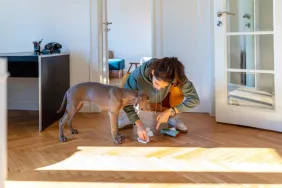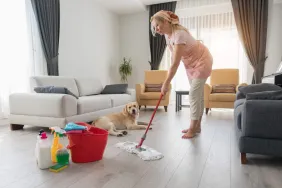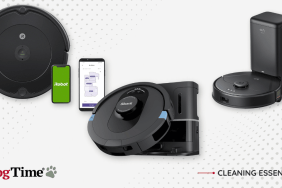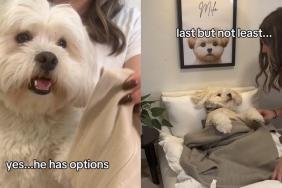Picture this: you’ve just vacuumed your living room for the third time this week, but there’s still a stubborn layer of pet hair clinging to your couch, carpet, and even your clothes. It’s as if your furry friend has taken it upon themselves to redecorate your entire home with a fresh coat of fur. Sound familiar? You’re not alone — managing pet hair is a universal struggle for dog parents everywhere. Fortunately, with the right pet hair remover tools and a few effective tips, you can easily minimize the fur and keep your living space cleaner and more comfortable.
As a disclaimer, purchases made through the links we’ve provided for our product recommendations help DogTime continue to provide tips and advice to pet owners like you.
Table of contents
- Why do pets shed fur?
- How to get pet hair off your couch
- How to remove dog fur or hair from your bed
- How to get pet hair out of carpet
- What is the best pet hair remover for laundry?
- How to remove pet hair from your car
- What is the most effective pet hair remover product or tool on the market?
- Tips for reducing pet hair in your home
Why do pets shed fur?
Before you tackle the fur-tastrophe, it’s helpful to know why it happens. Shedding is a natural process that helps animals get rid of old or damaged hair, making way for new growth. While some breeds — like Huskies — shed more than others, nearly all pets with fur experience some level of hair loss. Factors like the animal’s breed, diet, health, and even the changing seasons can affect the amount and frequency of shedding. For instance, many dogs have thicker coats in the winter and shed more heavily in the spring as they prepare for warmer weather.
It’s also worth noting that not all pet hair is the same. Cats and dogs can have long hair, short hair, or even a double coat. Short-haired pets can shed just as much as their long-haired counterparts, but their hair often embeds itself more stubbornly into the fabric. Consequently, understanding the type of fur you’re dealing with is key to managing it effectively.
With that in mind, let’s look at the some of the most effective ways to remove pet hair from different surfaces in your home.
How to get pet hair off your couch
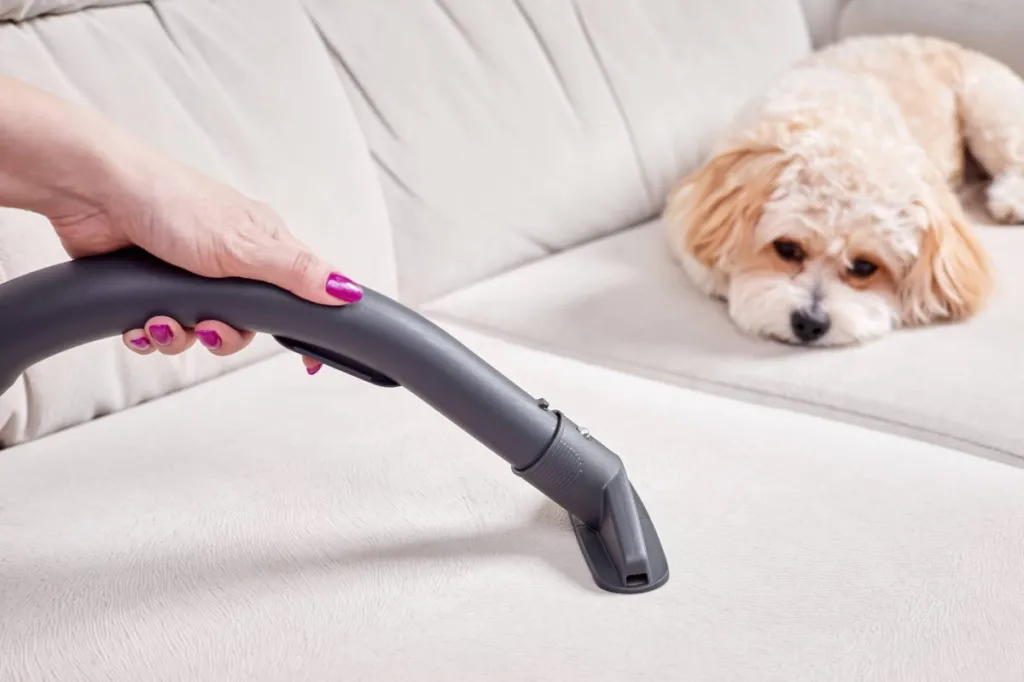
The couch is often the epicenter of fur buildup. Here are some pet hair remover tools you can use to keep it tidy:
- Lint roller: Lint rollers are a classic solution for a reason: they’re quick, easy, and effective for smaller jobs or spot cleaning. Keep one handy for a last-minute cleanup when guests are on their way over. If you don’t have a lint roller, wrap some packing or duct tape around your hand — sticky side out — and pat it over the fabric.
- Handheld vacuum: For a deeper clean, give your couch a thorough once-over with a handheld vacuum cleaner. Ensure your vacuum has a brush or pet hair attachment, as these are specifically designed to pick up fur more effectively. Run the vacuum over the couch in multiple directions to make sure you collect all the hair.
- Rubber gloves: If you’re looking for a more hands-on approach, a pair of rubber gloves can work wonders. Simply slip them on, dampen them slightly, and rub them over the couch. The rubber creates static electricity, which helps lift hair from the fabric.
- Fabric softener spray: Mix a small amount of liquid fabric softener with water in a spray bottle. Lightly mist your couch and then wipe it down with a cloth. The fabric softener reduces the static that causes hair to cling to surfaces, making it easier to remove. Just be careful not to saturate your couch, as too much moisture can be damaging.
How to remove dog fur or hair from your bed
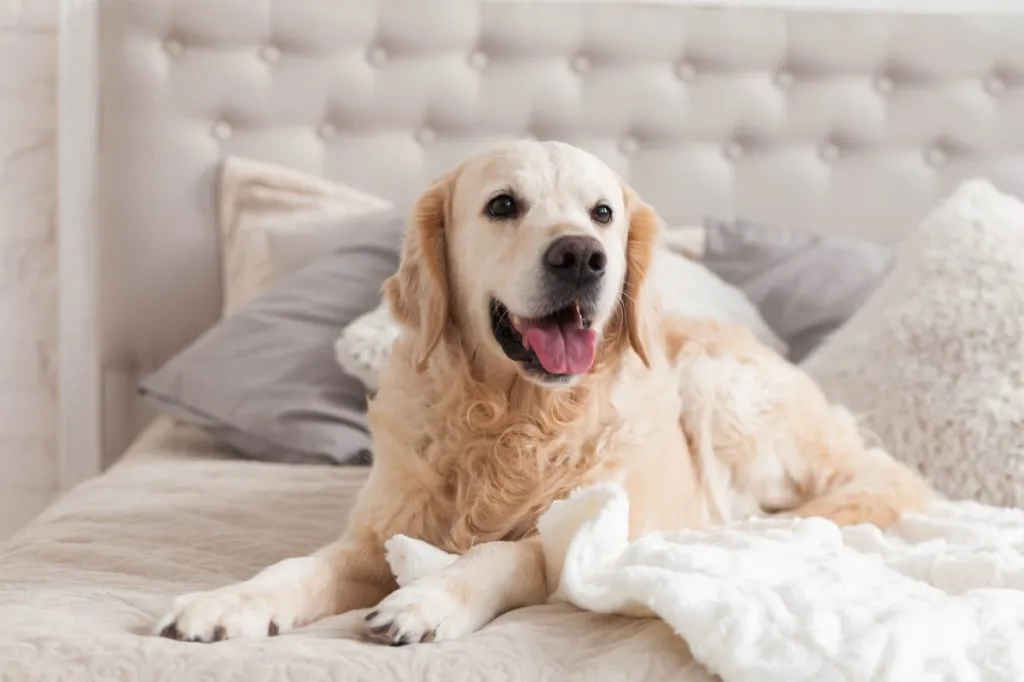
Pets love a good snooze on your bed, and who can blame them? Unfortunately, this often results in a comforter covered in pet hair. To combat this, here’s what you can do:
- Shake it off: Before making your bed in the morning, give your sheets and blankets a good shake outside. This will loosen and dislodge most of the hair clinging to your sheets and comforter. You’d be surprised how much a vigorous shake can accomplish!
- Lint roller: Just as you did with the couch, grab a lint roller and roll it over your sheets, pillows, and comforter. It’s an easy way to ensure a clean sleep environment.
- Vacuum cleaner: Regularly vacuum your bedding to suck up hair and dander. Be thorough, but gentle, especially on delicate fabrics.
- Dryer sheets: Dryer sheets can do more than just keep your laundry smelling fresh. Run a sheet over your bed to help loosen and collect pet hair. The sheets create a static charge that attracts the hair, making it easier to gather up. It’s a double win — less hair and a fresh scent!
- Wash with white vinegar: After you’ve done the initial clean-up, give your bedding a good wash. Add a half-cup of white vinegar to the rinse cycle to help loosen any remaining hair. Make sure to clean your washer’s filter afterward to prevent clogs.
- Cover up: Consider using a special pet blanket or sheet to cover the areas of the bed where your dog likes to hang out. It’s much easier to wash a blanket than your entire bedding set. What’s more, it’s a great way to protect your sheets from hair, dirt, and the occasional muddy paw print.
How to get pet hair out of carpet
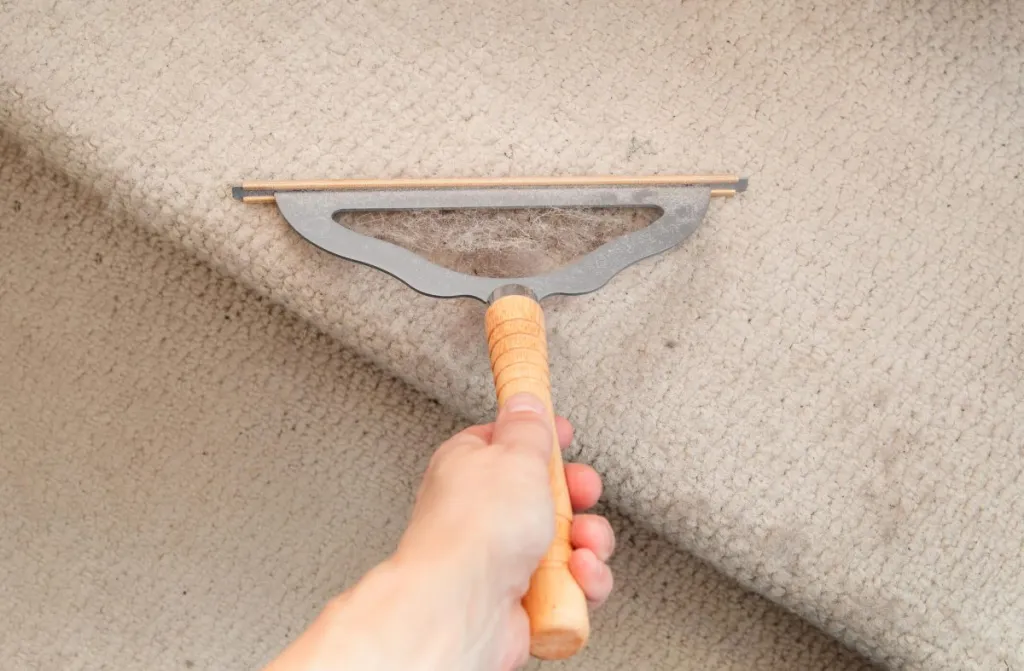
If your carpets are looking more like a fur coat than a flooring option, implement some clever cleaning hacks to reclaim your space from the fluff.
- Vacuum cleaner: As always, a high-quality vacuum cleaner is your first line of defense against pet hair. However, simply running the vacuum over your carpet may not do the trick. To maximize effectiveness, go slow and steady. Use overlapping strokes and consider vacuuming in multiple directions to capture as much hair as possible. If your vacuum has a HEPA filter, even better. It’ll trap allergens along with the hair.
- Baking soda: Sprinkle a generous amount of baking soda on the carpet before vacuuming. Not only will it help loosen pet hair, but it will also neutralize any lingering pet odors. Let it sit for a few minutes, then vacuum as usual. Your carpet will be left fresh and clean, with far fewer hairs in sight.
- Carpet rake: Much like raking leaves in the fall, a carpet rake pulls up pet hair embedded deep within the fibers. Use it before vacuuming for the best results.
- Rubber broom or squeegee: These can be used on both carpets and hard floors. Drag a rubber broom or squeegee across the carpet to gather up the hair. It works surprisingly well, thanks to the rubber edge that collects the fur with ease.
- Fabric softener: Mix a solution of fabric softener and water in a spray bottle — about one part softener to three parts water. Lightly mist the carpet to help loosen the grip pet hair has on your carpet fibers. This makes vacuuming more effective and leaves a pleasant scent behind. Avoid soaking the carpet; a little goes a long way.
What is the best pet hair remover for laundry?
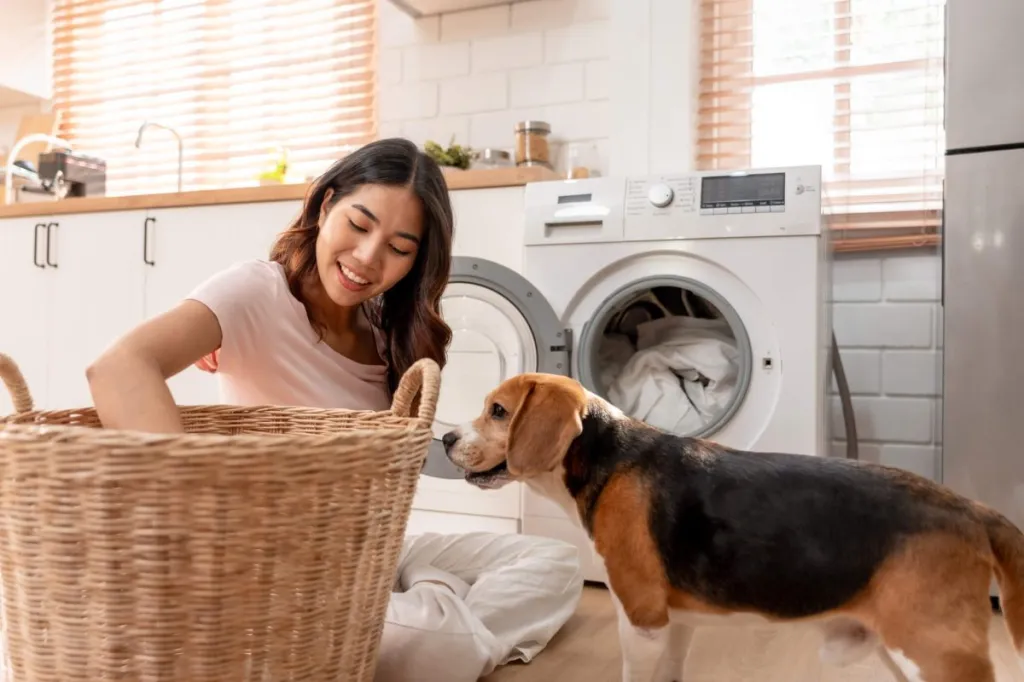
There’s nothing quite like getting to work and realizing your black pants have turned into a canvas for your dog’s shedding prowess. Try these tools and tips to keep your wardrobe fur-free and looking sharp:
- Lint roller: While lint rollers are traditionally used on clothing outside the laundry process, they can still be a handy tool for post-dryer touch-ups. Keep one near your laundry area for quick fixes on those garments that seem to attract hair like a magnet.
- Dryer balls: Dryer balls are a popular option for removing pet hair from laundry. These wool or rubber balls work by creating more separation between clothes in the dryer, allowing hot air to circulate more effectively and dislodging hair from fabric. Some dryer balls even come with spikes or a rough texture to help catch hair as it tumbles. Plus, they’re reusable and can cut down on drying time, making them an eco-friendly choice. Alternatively, you could throw a couple of FurZapper Pet Hair Removers into the washing machine or the dryer with your clothes. They’re also reusable, making them another environmentally-friendly option at your disposal.
- Fabric softener and anti-static spray: Static electricity can make pet hair stick to fabrics, so reducing static is essential. Accordingly, using a liquid fabric softener during the wash cycle or a dryer sheet in the dryer can help. Anti-static sprays are also available and can be spritzed on clothes to minimize static cling.
- Specialized laundry additives: There are detergents and laundry boosters specifically formulated to tackle pet hair during the wash cycle. These products often contain enzymes or other ingredients that help break down the oils and reduce static. It’s worth trying if you find that other methods aren’t effective.
- Washing machine care: Don’t forget your washing machine itself. Pet hair can accumulate inside, which means regular cleaning is important to keep it running smoothly. A quick rinse cycle without clothes or a wipe down of the drum can help clear out stuck fur.
How to remove pet hair from your car
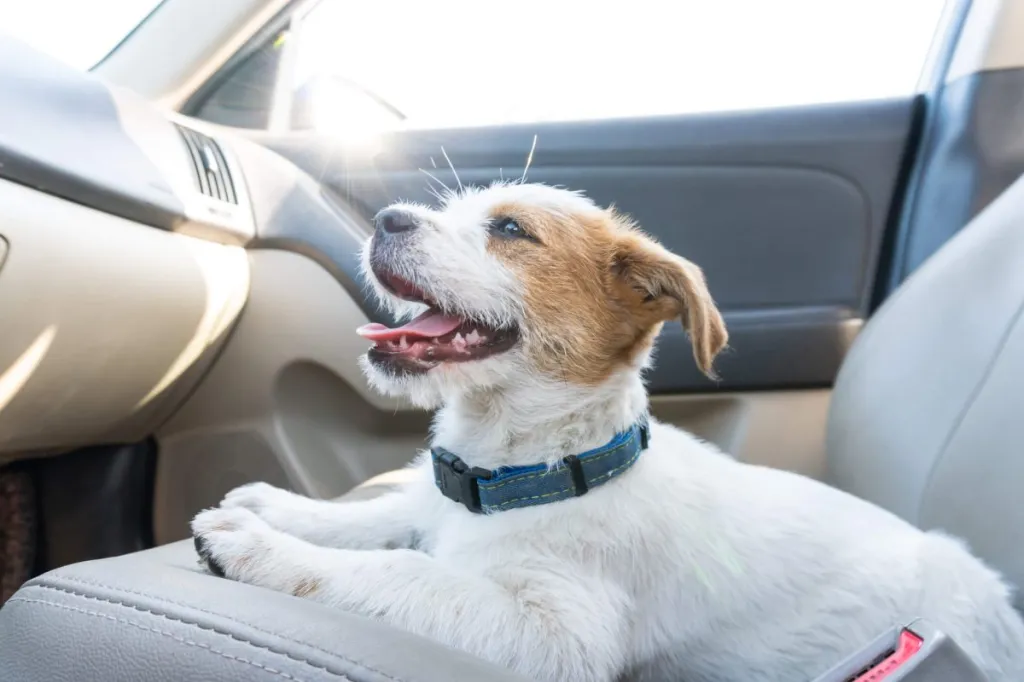
Your car is an extension of your home, especially when you have a dog who loves joyrides. Keep your vehicle clean with these tips and tools:
- Rubber gloves: Dampen a pair of rubber gloves slightly and run your hands over the surfaces of your car’s interior. The friction created by the rubber will attract and lift the pet hair. You can also rinse off the accumulated hair under running water and continue the process as needed.
- Portable vacuum cleaner: An obvious choice, but make sure your portable vacuum has the right attachments. A hose attachment with a brush can be incredibly effective in getting into those hard-to-reach areas between seats and around car doors.
- Pet hair remover brush or comb: For stubborn dog fur, a pet hair remover brush can be a game-changer. These brushes have bristles or rubber edges that help dislodge and collect hair with ease. Use short, firm strokes to gather the hair into a pile, then vacuum it up for quick disposal. One option is the Evercare Pet Plus Duo Dog and Cat Hair and Lint Remover. It’s a reusable, two-sided tool that helps you comb fur out of most surfaces. In fact, it’s soft and gentle enough to use on delicate clothing fabrics while the metal side is strong enough for tackling pesky pet hair stuck on vehicle upholstery, furniture, carpet and rugs, or denim.
- Microfiber cloth: Microfiber cloths are excellent for picking up pet hair, especially from hard surfaces like dashboards and door panels. These cloths have fine fibers that easily catch and hold onto hair. To use, slightly dampen the cloth and wipe it across surfaces where hair tends to accumulate. The key is to use gentle, sweeping motions to gather the hair without spreading it around.
- Seat covers: If your furry friend is a frequent passenger, investing in seat covers is a smart move. They not only protect your seats from hair but also from scratches, dirt, and spills. Look for covers that are machine washable and easy to install. When it’s time for a clean, simply remove the covers and toss them in the washing machine.
What is the most effective pet hair remover product or tool on the market?
When it comes to specialized pet hair removers, there are several products that pet parents swear by. One of the most popular options is the ChomChom Roller. This nifty tool doesn’t rely on sticky tapes or adhesives. Instead, it uses a unique brush system that efficiently picks up fur from various surfaces. Many pet parents appreciate its reusable nature, which makes it an eco-friendly choice.
Another notable tool is the Fur-Zoff Pet Hair Remover. Made from 90% foamed recycled glass, it resembles a pumice stone and is fantastic for car interiors, upholstery, and carpets. It’s a bit rough in texture, but that’s precisely why it’s so effective at getting deep into fabric fibers.
Stubborn hair stuck on your clothes, bedding, or furniture? While a less eco-friendly option, sometimes you need an effective, portable, easy-to-use tool capable of quickly removing dog hair. The Evercare Pet Plus Extreme Stick Ergo Grip Pet Lint Roller promises to collect 50% more lint or hair per sheet. Ticks and other stubborn pests will also stick to the sheets. Plus, the ergonomic handle makes it easy to use. As a way to reduce your carbon footprint, you can buy rolls of refill sheets, allowing you to minimize plastic consumption by reusing the roller.
You can also check out Bissell’s Pet Hair Eraser series. These vacuum cleaners are specifically designed for homes with pets and are equipped with specialized attachments to manage hair on furniture and carpets. Similarly, the Dyson V15 Detect has been praised for its powerful suction and laser technology that highlights hidden debris, including pet hair.
Ultimately, the best pet hair remover for you will depend on your specific needs and preferences, but these brands offer some of the most effective solutions on the market today. It’s also important to remember that no single solution fits all situations. Assess the surfaces you need to clean and consider the amount of hair your dog sheds to find a perfect pet hair remover.
Tips for reducing pet hair in your home
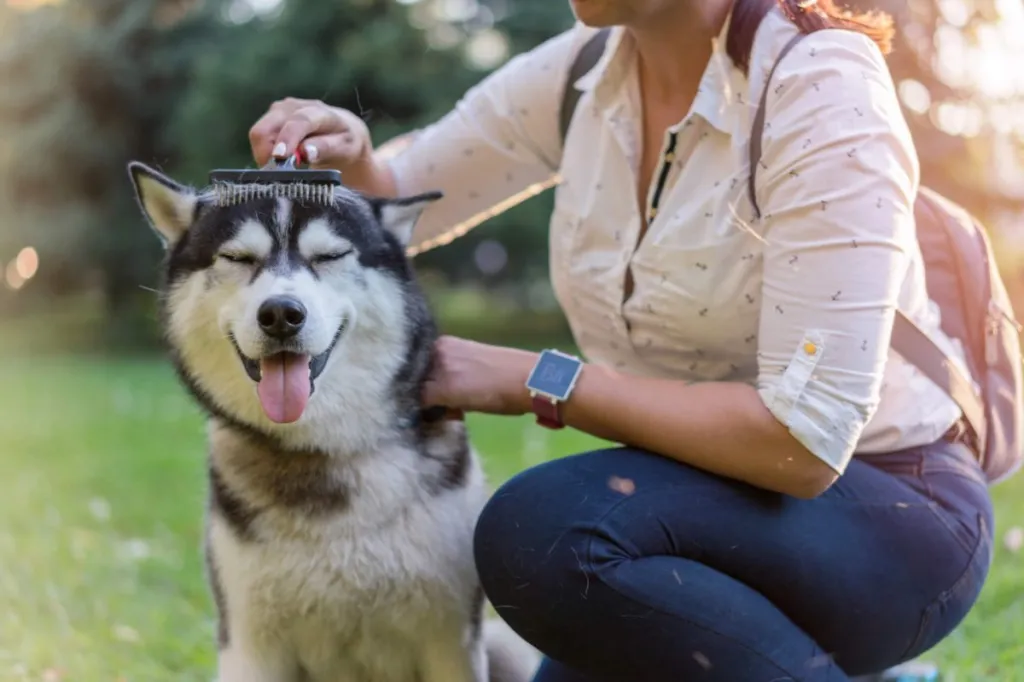
If pet hair seems to take over your home no matter how often you clean, perhaps it’s time to try a few new strategies. These tips will help you manage and cut down your pet’s shedding considerably.
- Brush your pet: The more hair you capture with a brush, the less that ends up on your furniture. Moreover, regular grooming also keeps your pet’s coat healthy. Depending on their coat type, you’ll need a slicker brush, a deshedding tool, or a bristle brush.
- Wash pet bedding and blankets: Pets love to snuggle up in soft spots, but these areas often become hotspots for hair accumulation. Wash your pet’s bedding and any blankets or throws they use frequently to minimize hair buildup.
- Make strategic furniture choices: If you’re in the market for new furniture, consider materials that repel pet hair. Leather and microfiber are generally easier to clean than heavy fabrics. If replacing furniture isn’t an option, using slipcovers can protect your couches and chairs from becoming hair havens.
- Use air purifiers: Invest in a quality air purifier with a HEPA filter to reduce pet hair and dander floating around your home. It won’t catch everything, but it can certainly help, especially if you have allergies. There are many affordable air filters on the market with great reviews. One of our favorites is the Levoit Core P350-P with an activated carbon filter. It is specifically designed to neutralize and even eliminate stubborn pet odors, minimize pet dander, and reduce pet hair or fur you’re otherwise breathing in. It’s quietly powerful and is effective even in homes with multiple pets. What’s more, this model has a pet lock to prevent your dogs — or even a curious cat — from changing any of the device settings on their own.
- Maintain a healthy diet: A good diet can contribute to a healthy coat, which may result in less shedding. Check with your vet to ensure your pet is getting the right nutrients.
So, you see, living with pets doesn’t mean you have to live with endless amounts of hair. A few good tools, consistent care, and some thoughtful planning can make all the difference. Sure, fur may be an inevitable part of being a pet parent, but so are the cuddles, fun, and unconditional love. And really, isn’t that worth a little bit of extra cleaning?

